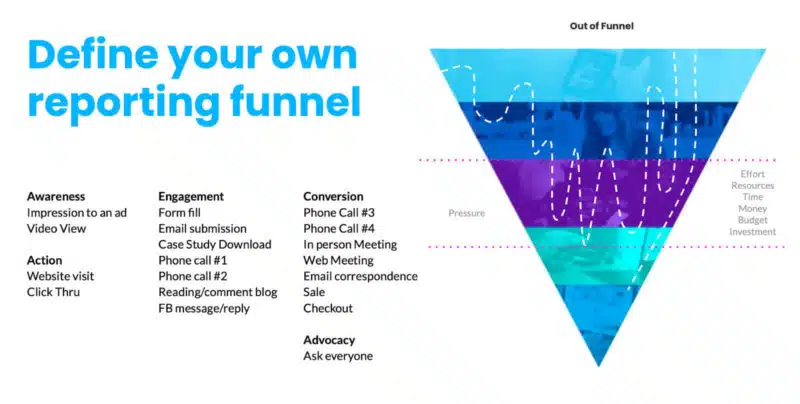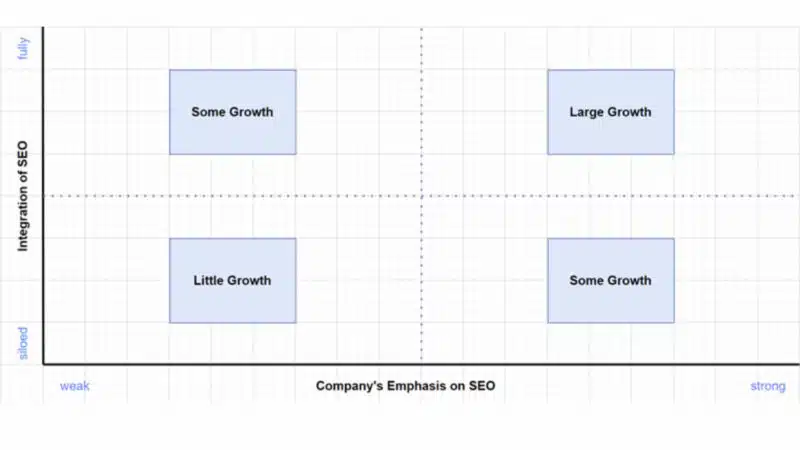Search Engine Land’s daily brief features daily insights, news, tips, and essential bits of wisdom for today’s search marketer. If you would like to read this before the rest of the internet does, sign up here to get it delivered to your inbox daily.
Good morning, Marketers, and Google Ads (the artist formerly known as AdWords) turned 21 this weekend.
Did you know that Google Ads started as a service where marketers paid a monthly fee and Google would set up and manage the ad campaigns? Quite ironic considering many advertisers today are lamenting the loss of control and data as Google Ads invests in more automation and is managing many elements of ad campaigns itself. The company offered a self-service option for small businesses “who wanted to manage their own campaigns,” which is the foundation of our current Ads platform today.
What was AdWords like when it first ramped up? “The AdWords program provides low-cost exposure on one of the industry’s leading search engines with CPMs from $15 or 1.5 cents an impression, $12 or 1.2 cents an impression, and $10 or 1 cent an impression, for the top, middle, and bottom ad unit positions, respectively,” stated the announcement.
Not only that but, “Google’s quick-loading AdWords text ads appear to the right of the Google search results and are highlighted as sponsored links, clearly separate from the search results.” It seems a lot has changed with Google’s ads product since inception, and yet we’re almost coming full circle in many ways too.
Carolyn Lyden,
Director of Search Content
How to solve the marketing reporting conundrum without being a magician


In a recent survey shared at SMX Report, C-Suite executives said sales and leads are top performance indicators for marketing teams. If sales and leads are what our leadership teams, whether internally or externally, care most about, what does this mean for PPC marketers?
Such preferences can lead to a level of expectation that marketers are going to create a magic sales faucet, a fountain of fortune, or that there’s a secret Google leads button hidden in our toolbox somewhere.
And hey, PPC marketers can help make some pretty magical things happen, but we’re definitely not magicians, at least not in the Gandalf the Grey or Albus Dumbledore kind of way. In this how-to, SMX speaker and Aimclear’s VP of Growth, Amanda Farley deep-dives into the steps to get reporting and measurement right for your audience.
Navigating Google’s title changes: The rollout, what’s happening now and what you can do about it
In August, Google introduced a new system for generating title links (the title of a search result in Google Search). “This is because we think our new system is producing titles that work better for documents overall, to describe what they are about, regardless of the particular query,” the company explained.
However, during the new system’s initial rollout, SEOs provided example after example after example of titles that not only failed to describe what the page was about, but may also confuse users and deter them from clicking through. Fortunately, the situation has since improved, but placing blind faith in Google’s new system can mean that you’re ceding control over a crucial aspect of your content, which could ultimately affect your business. Below, you’ll find a synopsis of how Google’s title changes have evolved, how you can verify whether your titles have been changed and what you can do to regain control over them.
In this in-depth analysis, editor George Nguyen covers what’s changed, what to do if you suspect Google is changing your titles, what to do if you dislike the changes Google is making, and what these changes mean for the future.
How to fix the SEO issues that keep you from achieving your goals


At this year’s SMX Report, JR Oakes, Senior Director of Technical SEO at Locomotive, provided an overview of SEO Issues that hold us back from achieving our goals. He took a holistic look at resources, communication and mental constructs around SEO that often hinder progress. Oftentimes we look for the quick fixes that drive major ranking improvements. These still exist, but the relationships involved with connecting us to clients, and the website to users are where the most sustained value can be found.
In this article, Oakes goes through the 8 ways that SEO teams can break through major issues and reach their KPIs and achieve their goals:
- Companies need the team buy-in and resources to succeed with SEO.
- SEO teams should focus on clarity of communication and efficient prioritization.
- The key areas to consider in SEO strategies are Links, Content (page satisfaction), Experience, and Relevance.
- GIGO is a real thing. Taking time to go slow with accurate XML sitemaps, custom metrics, user feedback mechanisms, etc can make your life easier and give you data to inform growth.
- Spend some time watching user sessions. You will thank me.
- Work hard to ensure your pages solve a problem or provide the right answer.
- Look at how your page’s content aligns with user searches provided by Google.
- Write to support and build your site’s subject matter expertise. Credibility is key.
Jobs: On the hunt for something new? Check out the latest jobs in search marketing
Marketing Automation Strategist @ The Keller Group (Greater Phoenix Area, remote)
- Salary: $75k-$90k/yr
- Strategize & build multi-channel campaigns across email, social, web and paid media
- Present innovative digital strategies to peers, potential clients and existing clients
Head of Growth and Marketing @ Insight Global (California, U.S., remote)
- Salary: $130k-$150k/yr
- Lead customer acquisition initiatives by strategizing and executing growth marketing campaigns via paid, organic, social and search ads.
- Analyze and optimize campaign performance across major platforms like Twitter, Linkedin, Blog, Google Search, etc.
Ecommerce Associate Director @ Havas Media Group (London, England, UK)
- Salary: £50k-£60k/yr
- Support our existing and future Clients with Ecommerce consultancy services – concentrating (albeit not exclusively) on new product development, roadmap definition, experience management and support in the creation of business cases
- Have in depth experience of eCommerce tactics and how to influence the physical and digital journeys.
Content Marketing Manager @ GoHealth (Texas, U.S.)
- Salary: $85k-$90k/yr
- Develop a master content plan that meets lead generation and strategic brand goals; translate this plan into an editorial calendar and manage the workflow to execute
- Create short-form and mid-length direct response content for lead generation including native articles, landing page copy, and paid social advertisements
What We’re Reading: What does “shoppable” content mean for the upcoming holiday season?
We’ve mentioned it a thousand times, probably, but the pandemic has accelerated e-commerce and online retail. It’s a fact of life that the trends of COVID shopping have just become a way of life now. People expect to find what they need online (whether they plan to have it delivered or pick it up on location), and that reality coupled with advances in AI and VR technology means retailers are looking to “shoppable content” to boost their online sales this holiday season.
How are platforms doing it? Mike Boland covers the top 3 for StreetFight here.
- Pinterest. “Pinterest recently rolled out the ability for merchants to automatically create videos from the products they’ve already displayed on their accounts. This creates a slideshow that taps into the demand around videos and stories-based formats in social feeds. The videos also link directly to merchant check-out pages.” Along with this Pinterest Creators can tag brands in their pins which is a useful addition for affiliate and influencer marketers.
- TikTok. TikTok is continuing to expand their shopping options, ads, and integrations. One example is TikTok Shopping, which “lets Shopify merchants that have a TikTok For Business account add a ‘Shopping’ tab to their TikTok profiles. That in turn lets them sync product catalogs and create mini storefronts on TikTok. So the integrations continue to expand in several directions,” said Boland.
- YouTube. “YouTube just this week announced that it’s expanding its program for live shopping. This gives merchants a QVC-like format to stream product demonstrations. It’s rolling the whole thing out through a week-long event called ‘YouTube Holiday Stream and Shop’ starting November 15.” The move elevates YouTube to a shopping destination.
Shopping doesn’t just happen on e-commerce sites anymore. Social and streaming platforms are becoming retail destinations (especially as we near the holiday season) with shoppable content. Retailers will have to take advantage of the integrations to ensure they’re found across channels this shopping season.
Contributing authors are invited to create content for Search Engine Land and are chosen for their expertise and contribution to the search community. Our contributors work under the oversight of the editorial staff and contributions are checked for quality and relevance to our readers. The opinions they express are their own.

![Harry, yer a [reporting] wizard; Monday's daily brief](https://searchengineland.com/wp-content/seloads/2021/04/Check-your-reporting.jpg)

